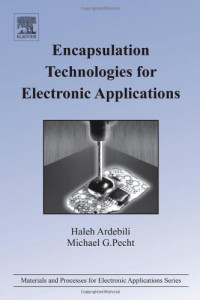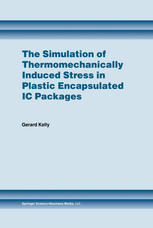
The Simulation of Thermomechanically Induced Stress in Plastic Encapsulated IC Packages
Dr. Gerard Kelly (auth.)One of the greatest challenges facing package manufacturers is to develop reliable fine pitch thin packages with high leadcounts, capable of dissipating heat, and deliver them in volume to the market in a very short space of time. How can this be done? Firstly, package structures, materials, and manufacturing processes must be optimised. Secondly, it is necessary to predict the likely failures and behaviour of parts before manufacture, whilst minimising the amount of time and money invested in undertaking costly experimental trials. In a high volume production environment, any design improvement that increases yield and reliability can be of immense benefit to the manufacturer. Components and systems need to be packaged to protect the IC from its environment. Encapsulating devices in plastic is very cheap and has the advantage of allowing them to be produced in high volume on an assembly line. Currently 95% of all ICs are encapsulated in plastic. Plastic packages are robust, light weight, and suitable for automated assembly onto printed circuit boards. They have developed from low pincount (14-28 pins) dual-in-line (DIP) packages in the 1970s, to fine pitch PQFPs (plastic quad flat pack) and TQFPs (thin quad flat pack) in the 1980s-1990s, with leadcounts as high as 256. The demand for PQFPs in 1997 was estimated to be 15 billion and this figure is expected to grow to 20 billion by the year 2000.
 Amazon
Amazon  Barnes & Noble
Barnes & Noble  Bookshop.org
Bookshop.org  转换文件
转换文件 更多搜索结果
更多搜索结果 其他特权
其他特权 










